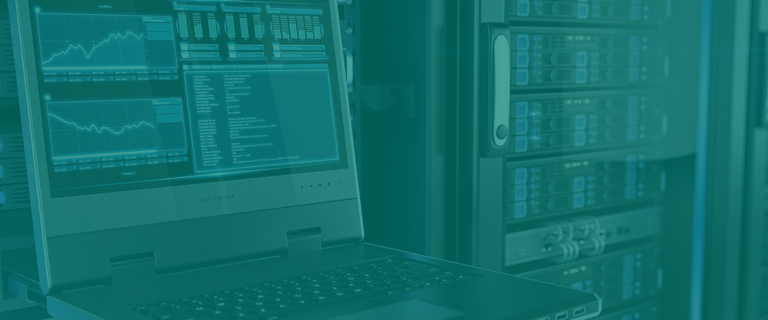
IBM i recently celebrated 30 years since its introduction as the AS400 in 1998. While the technology has stood the test of time, it’s not the same technology it was back then. Spoiler alert: it’s exponentially better.
While running IBM i on POWER9 hardware still has the same integrated database and design as the AS400 did thirty years ago (only better), the new hardware is poised to take you into the future.
IBM i is all about integration. It has an integrated database, which simplifies administration and makes processing faster. It has integrated Web services, so we can connect to the external world with graphical user interfaces and still have the processing power that the green screen offers. It even has integration with Watson through Bluemix.
Welcome to the POWER9 of tomorrow
Machine learning and artificial intelligence are at the top of the list of things IBM wants you to do with your new server. They are the future of POWER9. IBM has rebranded the Power Systems group to be the Cognitive Systems group. Big Blue firmly believes that the data that drives business today will continue growing exponentially and that being able to consume that data and make decisions on the fly is what will separate one company from another.
How the POWER9 Delivers Performance
To process all the data companies are generating, POWER9 is an engineering marvel. The POWER9 chip is about an inch square. Packed into that chip are over 15 miles of wire, 17 levels of metal, and 8 billion transistors. Yes, I said 8 billion with a ‘b’. This one-inch square offers 1.5 times the performance over a POWER8 processor and provides two times the performance of an X86 processor.
The POWER9 is the first server to support the Peripheral Component Interconnect Express (PCIe) Gen4 standard. Great news for data analytics because it means you will be able to process data almost two times faster than you could with PCIe Gen3. The bigger issue is that there are not many Gen4 components available yet, but POWER9 will be able to hit the ground running when they become available.
Industry standard DDR4 DIMM memory (RDIMMs) is available in the new POWER9 S914, S922, and S924 Scale-Out servers that most IBM i shops will purchase. RDIMMs will lower the cost per GB of memory for i shops. The caveat is that while RDIMM memory is less expensive, it is also slower than the Centaur DIMM chips (CDIMMs) used in IBM POWER8 hardware and the new Scale-Up POWER9 servers. The industry standard RDIMMS support speeds of 170 GB/s, while the CDIMMs in the Scale-Up servers will still use CDIMM buffered memory that supports speeds of 230 GB/s. All this means is that if you’re buying a Scale-Out POWER9 server to replace a POWER8, you should add more memory to the box to keep the same memory bandwidth you had with POWER8. Shops buying a Scale-Up server–including the POWER9 E980 model that can run IBM i, AIX, and Linux–don’t have to worry about slower memory, because the E980 still comes with CDIMM chips.
A good piece of news is that POWER9 supports up to 4TB of memory on a two-socket server. And if there’s one thing you can never have too much of on an IBM I, it’s the memory. Being able to add more memory to the POWER9 for a lower cost is a win for the community, especially with the future of data analytics.
Machine Learning and Artificial Intelligence the Future of IT
Business has always wanted a crystal ball which could help them to determine the right inventory levels to maintain or which strategic investments to make in advance. When the AS/400 was unveiled data analytics was just a dream; today data analytics is poised to deliver machine learning and artificial intelligence to business. And POWER9 is ready to take you there.
Machine learning is based on modeling. The data is presented to the system based on a variety of conditions. An excellent example of this is a self-driving car. To teach the vehicle how to drive in different situations, humans will drive the car in all kinds of conditions, and the computer learns what to do based on what the human does. After the human driver has driven around 3,000 miles in different weather and road conditions, machine learning is ready to take over. Your self-driving car is now trained and fully functional.
Artificial Intelligence (AI) is like machine learning. The difference is that AI is about machines performing human-like tasks. These machines can plan, learn, understand language, recognize objects and interact. If you went to COMMON and had a chance to talk to Pepper the humanoid robot, this was an example of AI on POWER9.
Developing AI solutions is difficult. Luckily, IBM makes it easier for IBM i users to take advantage of the AI capabilities of Watson. You can connect the data on your POWER9 with the AI power of Watson using data connectors. You get the power of Watson with the ease of integration that the POWER hardware has a reputation for.
The Future is Bright with POWER9
If your company is looking to take advantage of the data you’re gathering, then POWER9 is a great investment. Being able to easily interface with Watson is a big bonus that will help companies perform data analytics faster than ever before. The future of IBM i extends long into the future, with IBM i support extending out to 2028. No other operating system has a published support date this far into the future. You can rest assured that an investment in POWER9 hardware to run your IBM i operating system is a continued investment in your future.




